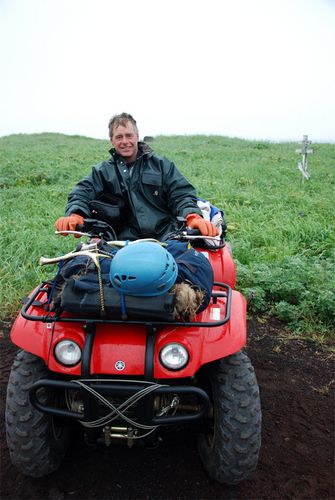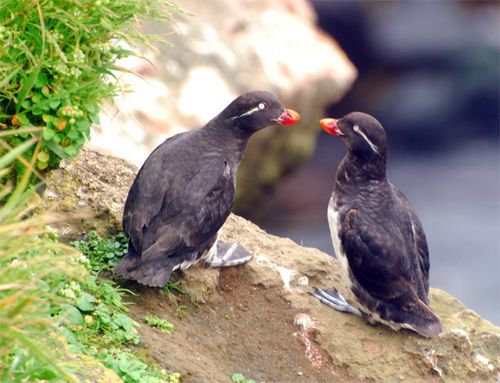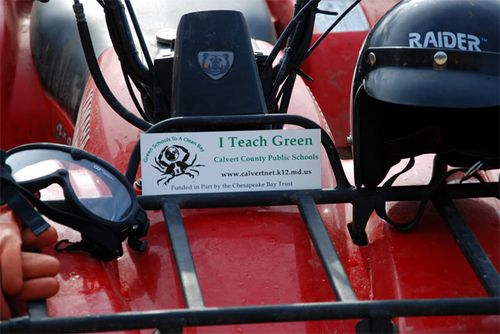Tomorrow is the first day of school. My summer whirlwind of juggling work and home responsibilities, packing and traveling and participating in an amazing research project are coming to an end and a new year is beginning. It is a strange transition in many ways. I've traded in my bulky cold weather gear for shorts and a t-shirt. My shifts on the cliff watches have given way to hours of work in the yard. It's been an incredible journey that really began well before I first stepped off of the plane onto St. Paul Island.


Just over a year ago, Tracy, Jake and I took our first ever trip to Alaska. This was a place that I'd always dreamed of visiting, but never had managed to make the trip. We did many of the standard tourist stops, a few days down on the Kenai Peninsula before working our way north to Denali National Park with stops in Anchorage for refueling the rented Tioga RV that was our home for those spectacular two weeks. As we flew back to Maryland and I watched as the lights of Anchorage recede from view, I wondered, how and when will I ever make it back to this incredible place?
Little did I know then that a special e-mail awaited me back home in my overflowing virtual inbox describing a fantastic program called PolarTREC. I read with growing interest of this marvelous program that partnered teachers with researchers who were conducting cutting edge research in the Arctic and Antarctic regions. A week or two later I submitted my application and a few months later, I was back in Alaska for my PolarTREC orientation meeting. Of course, it was a few months after that I was back again, this time in the Pribilofs.

I am back in Maryland now, but definitely feel like the journey is still underway. I have formed connections with the research team that I expect will last for years. I've learned so much about seabirds and the research process that will inform the work that I do with students in our quest to learn about the ecology of the Chesapeake Bay. I am excited about telling the story of the birds of this remote island and what they can teach us about our own interaction with both our local and global environments.



As I've crossed paths with friends and colleagues now that I'm back, inevitably I'm asked, "how was your trip?" I've run out of superlatives to answer that question. "Awesome", "inspiring", "amazing", these terms really seem to miss the mark. I think more than the scenery, more than the amazing views of wildlife, and the opportunity to meet some fascinating people, was the chance to truly become engaged with the research work in the Bering Sea. I was able to feel that even in some small way, I was making a contribution toward our understanding of how the seabirds are integrated with the myriad of living things within the Bering Sea.

I think that that is the biggest "take home" lesson of them all. If the students that I teach feel that the research work that they are doing is important, that their contribution, even if it is a small one, helps to grow the body of knowledge about the environment, they too, will become engaged with the process of science.
Tomorrow is the first day of school and now, the expedition to the Pribilofs is behind me, a new year lies ahead. I'm looking forward to the challenge of helping our students learn about their connection to the Chesapeake Bay. But also, their connection to a little fog covered island in the middle of the Bering Sea, where it never really gets warm, even in the summer time and thousands of seabirds and seals return each year to raise their young and hunt for fish in the bountiful sea.

- < prev
- 30 of 30


Comments